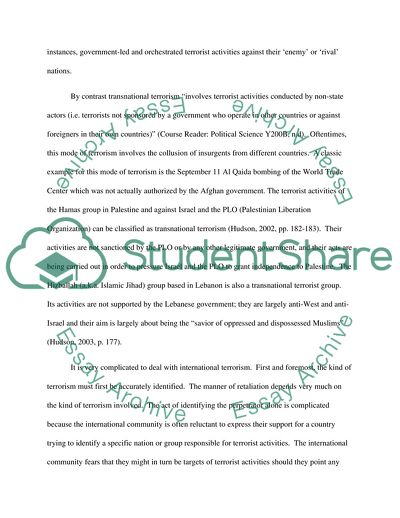Cite this document
(The Global Aspect: International Terrorism Essay Example | Topics and Well Written Essays - 1250 words, n.d.)
The Global Aspect: International Terrorism Essay Example | Topics and Well Written Essays - 1250 words. https://studentshare.org/politics/1720755-political-sciene-political-terrorisim
The Global Aspect: International Terrorism Essay Example | Topics and Well Written Essays - 1250 words. https://studentshare.org/politics/1720755-political-sciene-political-terrorisim
(The Global Aspect: International Terrorism Essay Example | Topics and Well Written Essays - 1250 Words)
The Global Aspect: International Terrorism Essay Example | Topics and Well Written Essays - 1250 Words. https://studentshare.org/politics/1720755-political-sciene-political-terrorisim.
The Global Aspect: International Terrorism Essay Example | Topics and Well Written Essays - 1250 Words. https://studentshare.org/politics/1720755-political-sciene-political-terrorisim.
“The Global Aspect: International Terrorism Essay Example | Topics and Well Written Essays - 1250 Words”. https://studentshare.org/politics/1720755-political-sciene-political-terrorisim.


